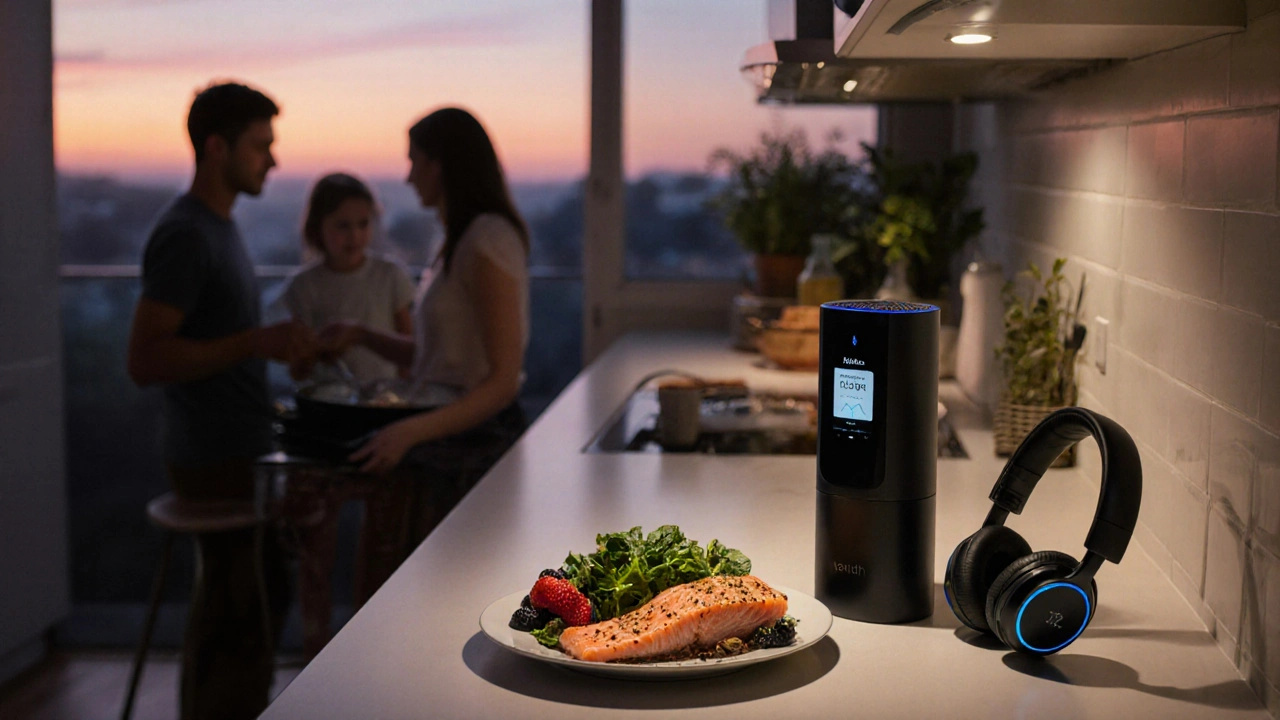Ischemia Risk Assessment Tool
This tool helps assess your risk of ischemia based on common environmental exposures. Answer the questions below to get personalized feedback.
Environmental Risk Factors
Ever wonder why a smoggy morning can leave you feeling breathless, or why high‑altitude hikes sometimes bring a headache and fatigue? Those sensations often tie back to a hidden culprit: ischemia is a condition where blood flow-and thus oxygen delivery-to tissues is insufficient to meet metabolic demand. When the heart, brain, or even muscles don’t get enough oxygen, you’re looking at a cascade that can spark chest pain, cognitive lapses, or even permanent organ damage.
What makes it scarier is that the environment around you can set the stage for ischemia without you ever realizing it. From the air you breathe to the temperature you endure, a host of environmental factors silently shape how well blood circulates. Understanding these links empowers you to tweak daily habits, protect your vessels, and keep your heart and brain humming.
Key Takeaways
- Ischemia happens when blood flow can’t meet tissue oxygen needs.
- Air pollution, extreme temperatures, high altitude, smoking, and noise all tighten the blood‑flow pipeline.
- Endothelial function-a thin inner lining of blood vessels-is the primary target of many environmental stressors.
- Simple lifestyle tweaks (indoor air filters, temperature control, regular movement) can blunt the harmful impact.
- Monitoring personal risk factors and adopting a mitigation checklist can reduce ischemic episodes.
What Exactly Is Ischemia?
In plain terms, ischemia is a shortage of blood-and therefore oxygen-to an organ. It can be acute (think heart attack) or chronic (slow‑burning peripheral artery disease). The root cause is usually a blockage or narrowing of arteries, but the severity often hinges on how well the vessel walls, called the endothelial function regulates dilation, inflammation, and clot formation adapt to stress.
When endothelial cells stiffen, they release less nitric oxide, a molecule that keeps vessels relaxed. The result: tighter arteries, higher blood pressure, and a higher chance that a tiny plaque will tip over into a full‑blown blockage.
How Environmental Stressors Mess With Blood Flow
Every external factor that forces the heart to work harder or narrows your vessels raises ischemic risk. Below are the heavyweight hitters.
Air Pollution
Air pollution refers to a mixture of particulate matter (PM2.5, PM10), nitrogen oxides, ozone, and volatile organic compounds suspended in the atmosphere is a silent assassin for cardiovascular health. Studies from the World Health Organization (2023) link a 10µg/m³ rise in PM2.5 to a 12% increase in heart‑attack risk. Why? Fine particles infiltrate the lungs, trigger systemic inflammation, and generate reactive oxygen species (ROS) that damage endothelial cells.
Temperature Extremes
Both scorching heat and biting cold can constrict blood vessels. In hot weather, the body dilates peripheral vessels to dump heat, forcing the heart to pump faster-raising myocardial oxygen demand. In cold, sympathetic nerves tighten vessels, spiking blood pressure and making plaques more likely to rupture.
Research from the University of Sydney (2022) showed that a 5°C drop in ambient temperature hikes stroke incidence by 8%.
Altitude
At higher elevations, atmospheric oxygen drops about 1% every 300m. The body compensates by increasing breathing rate and heart output, but the reduced oxygen reservoir can still tip the balance for those with marginal circulation. Acute mountain sickness often masquerades as mild cerebral ischemia.
Acclimatization-spending a few days at moderate elevation before a high‑altitude trek-boosts red‑cell production and improves oxygen delivery the transport of oxygen from lungs to tissues, lowering ischemic risk.
Smoking and Second‑hand Smoke
Every cigarette delivers nicotine, carbon monoxide, and thousands of toxins straight to the bloodstream. Carbon monoxide binds to hemoglobin with an affinity 200× that of oxygen, effectively reducing the blood’s oxygen‑carrying capacity. The result is a double hit: less oxygen and tighter vessels.
Even brief exposure to second‑hand smoke can raise platelet aggregation-a key step toward clot formation-by 15%.
Noise Pollution
Persistent traffic or industrial noise isn’t just annoying; it spikes stress hormones like cortisol and adrenaline. Those hormones constrict arteries, raise blood pressure, and promote inflammation, all of which erode endothelial health.
A European cohort study (2021) linked night‑time noise levels above 55dB to a 20% rise in hypertension‑related ischemic events.

Putting It All Together: A Quick Reference Table
| Factor | Primary Mechanism | Typical Risk Increase |
|---|---|---|
| Air Pollution (PM2.5) | Inflammation & ROS damage to endothelium | +12% heart‑attack risk per 10µg/m³ |
| Extreme Heat | Higher cardiac output + dehydration | +8% myocardial strain in >30°C days |
| Cold Exposure | Vasoconstriction + blood pressure surge | +8% stroke risk per 5°C drop |
| High Altitude (>2,500m) | Reduced oxygen availability | +5% cerebral ischemia risk per 500m gain |
| Smoking | Carbon monoxide binding & endothelial injury | +30% ischemic heart disease risk |
| Noise (>55dB night) | Stress‑induced vasoconstriction | +20% hypertension‑related events |
Everyday Strategies to Guard Against Ischemia
Knowing the villains is half the battle. Below are practical steps that slot into a normal routine.
- Clean indoor air: Use HEPA filters, keep windows closed on high‑pollution days, and grow air‑purifying plants like snake plant.
- Temperature control: Keep indoor temps between 20‑22°C in winter and below 26°C in summer. Stay hydrated to offset heat‑induced blood thickening.
- Gradual altitude exposure: If you plan a high‑altitude trek, ascend no more than 300m per day after the 2,500m mark, and incorporate rest days.
- Quit smoking: Seek nicotine‑replacement therapy or counseling. Even reducing cigarette count by half drops carbon monoxide levels dramatically within 48hours.
- Mute the noise: Install double‑pane windows, use white‑noise machines at night, and wear earplugs in persistent loud environments.
- Boost endothelial health: Eat omega‑3‑rich fish, dark leafy greens, and berries. Regular aerobic exercise (30min brisk walk, 5days/week) nudges nitric oxide production.
- Regular health checks: Blood pressure, cholesterol, and C‑reactive protein (CRP) testing help catch early endothelial dysfunction.
Personal Risk‑Assessment Checklist
Grab a pen and tick the boxes that apply to you. If you hit three or more, consider a deeper medical consultation.
- Do you live in a city where PM2.5 regularly exceeds 12µg/m³?
- Are you frequently exposed to outdoor temperatures <5°C or >30°C for more than three hours?
- Do you work or live at elevations above 1,500m?
- Do you smoke or are you around smokers daily?
- Is nighttime noise in your bedroom louder than 55dB?
- Do you have a family history of heart disease or stroke?
- Are you over 45 and have never had a cardiovascular screening?
When to Seek Professional Help
If you notice any of the following, call your doctor or head to an urgent‑care center:
- Chest pressure or tightness lasting longer than a few minutes.
- Sudden, unexplained weakness or numbness on one side of the body.
- Severe shortness of breath during normal activities.
- Persistent headaches accompanied by visual disturbances.
Early detection of ischemic changes-through ECG, stress testing, or imaging-dramatically improves outcomes.

Frequently Asked Questions
Can short‑term exposure to air pollution trigger a heart attack?
Yes. Research shows that a single day of high PM2.5 levels can raise heart‑attack risk by up to 6%, especially in people with pre‑existing artery plaque.
Is it safe for a former smoker to exercise outdoors in polluted cities?
If air‑quality indexes are in the “moderate” range (PM2.5 <35µg/m³), light to moderate activity is okay. For “unhealthy” levels, shift workouts indoors or use a mask designed for particulate filtration.
How does noise actually affect my blood vessels?
Chronic noise boosts cortisol and adrenaline, signaling the sympathetic nervous system to constrict arteries and raise blood pressure, which over time erodes endothelial function.
Do altitude‑related headaches signal ischemia?
Headaches at altitude often stem from reduced oxygen pressure. If they’re accompanied by dizziness, confusion, or visual changes, they could indicate cerebral ischemia and warrant medical evaluation.
What diet supports endothelial health?
A Mediterranean‑style diet rich in omega‑3 fatty acids (salmon, sardines), antioxidants (berries, dark chocolate), and polyphenols (olive oil, nuts) bolsters nitric‑oxide production and reduces inflammation.






Written by Martha Elena
I'm a pharmaceutical research writer focused on drug safety and pharmacology. I support formulary and pharmacovigilance teams with literature reviews and real‑world evidence analyses. In my off-hours, I write evidence-based articles on medication use, disease management, and dietary supplements. My goal is to turn complex research into clear, practical insights for everyday readers.
All posts: Martha Elena